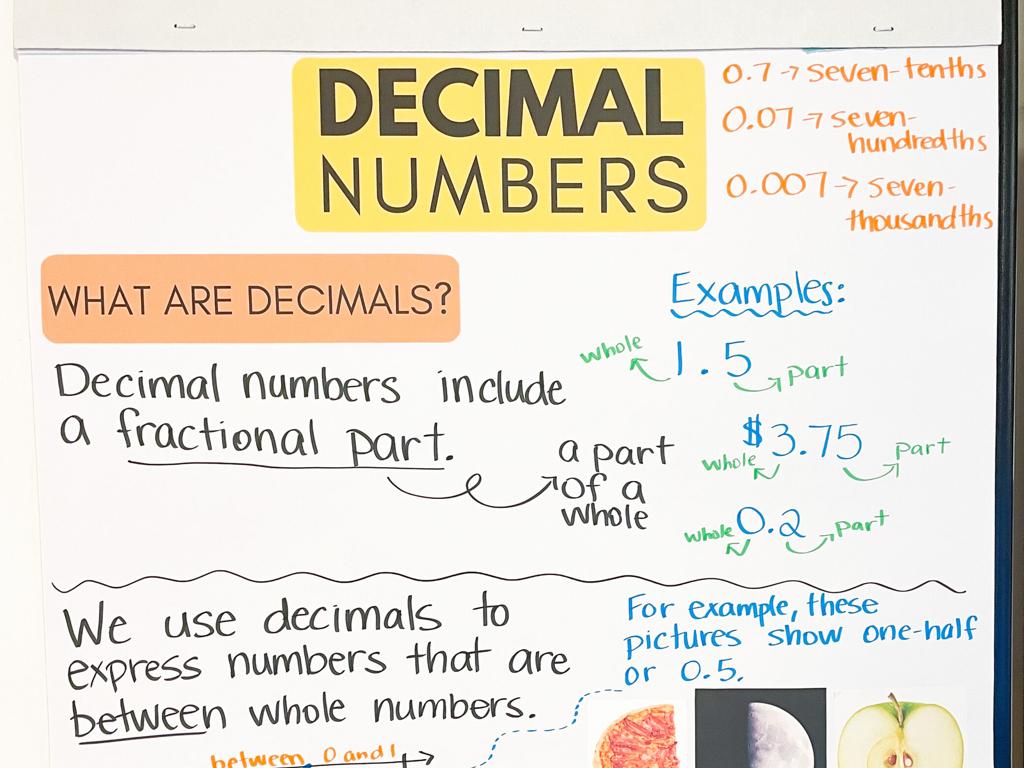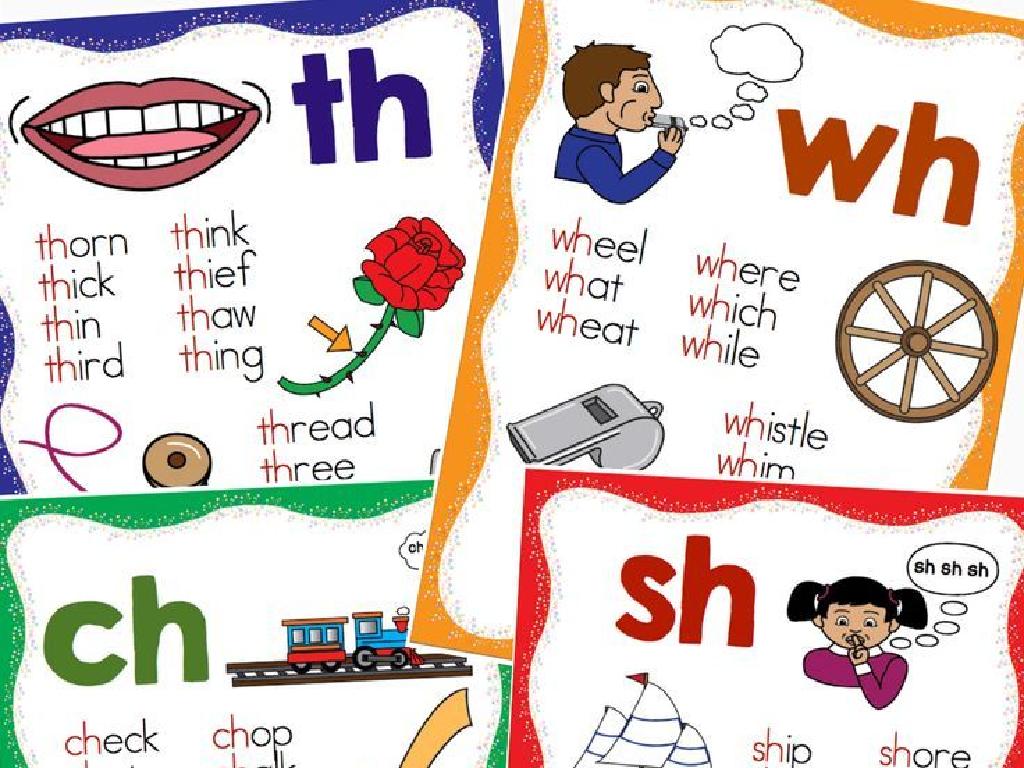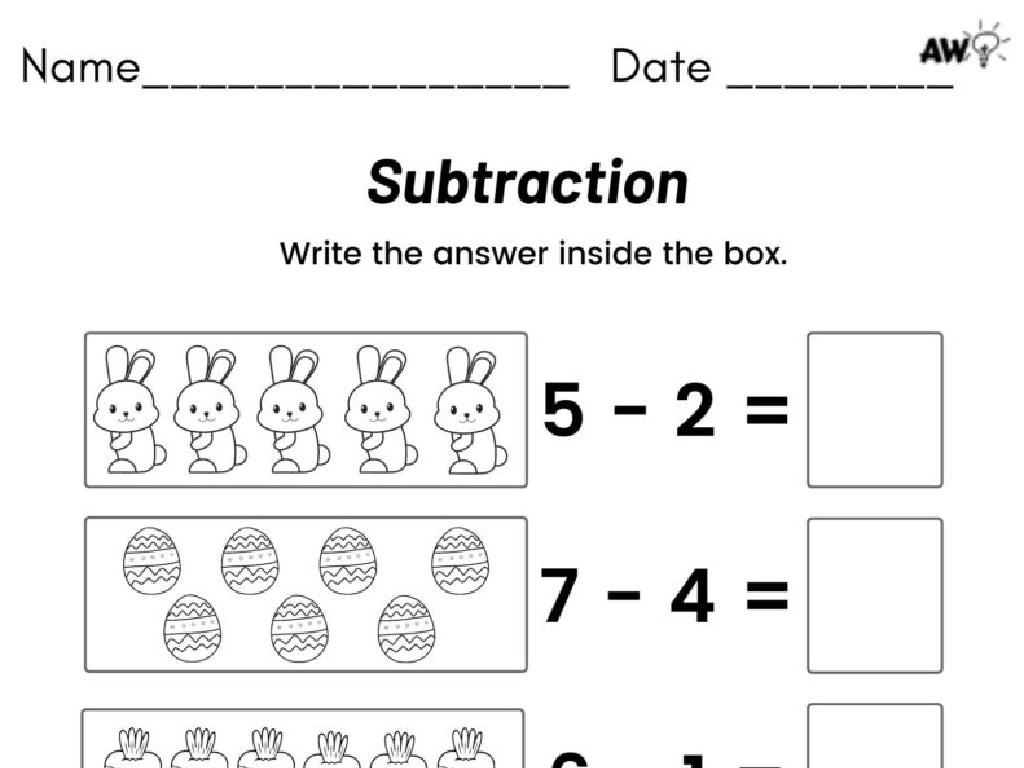Integer Subtraction Rules
Subject: Math
Grade: Seventh grade
Topic: Operations With Integers
Please LOG IN to download the presentation. Access is available to registered users only.
View More Content
Welcome to Integer Subtraction!
– Grasp the concept of integers
– Integers include positive, negative numbers, and zero
– Focus on integer subtraction rules
– Rules like ‘subtracting a positive is adding a negative’
– Master effective subtraction methods
– Use number lines and counters for visual understanding
– Set learning objectives
|
This slide introduces the concept of integer subtraction, which is a key component of understanding mathematics for seventh graders. Begin by ensuring that students have a solid grasp of what integers are, including the fact that they consist of positive numbers, negative numbers, and zero. Emphasize today’s focus on the rules for subtracting integers, such as the idea that subtracting a positive number is the same as adding its negative counterpart. Demonstrate methods for effective subtraction, including the use of number lines and counters to provide a visual aid. The objective is for students to leave the lesson with a clear understanding of how to subtract integers in various mathematical contexts.
Understanding Integers in Subtraction
– Integers: positives, negatives, zero
– Integers are whole numbers without fractions
– Integers on the number line
– A visual tool for ordering integers
– Examples: -3, 0, 4
– -3 is less than 0, and 4 is greater than 0
– Subtraction with integers
– Subtracting a negative is like adding a positive
|
This slide introduces the concept of integers, which are the building blocks of our number system in mathematics. Integers include all whole numbers, both positive and negative, as well as zero. They can be represented visually on a number line, which helps students understand their order and relative position. Examples like -3, 0, and 4 illustrate the range of integers. When it comes to subtraction, a key rule for students to remember is that subtracting a negative number is the same as adding its positive counterpart. This fundamental concept will be crucial as they learn to perform operations with integers.
Recap: Adding Integers
– Review integer addition rules
– Same signs: Add, keep the sign
– e.g., (+3) + (+2) = +5
– Different signs: Subtract, larger number’s sign
– e.g., (+7) + (-2) = +5, (-7) + (+2) = -5
– Practice with examples
– Use examples like temperatures or bank transactions
|
Begin the class with a quick recap of the rules for adding integers to refresh students’ memory and set the stage for learning about subtraction. Emphasize that when adding integers with the same sign, we simply add the numbers and keep the common sign. When the integers have different signs, we subtract the smaller number from the larger one and keep the sign of the number with the larger absolute value. Provide a variety of examples and encourage students to think of real-life situations where they might add integers with different signs, such as adjusting temperatures or managing a bank account. This will help them understand the concept better and see its practical applications.
Understanding Integer Subtraction
– Subtraction as addition’s opposite
– If a + b = c, then c – b = a
– ‘Taking away’ concept in subtraction
– Imagine you have 5 apples and you give away 2
– Subtracting negatives equals adding
– Subtracting a negative number is the same as adding its positive counterpart
– Practice with real-life examples
|
This slide introduces the fundamental concept of subtraction in the context of integers. Start by explaining that subtraction is the inverse operation of addition, which can be represented by the equation a + b = c, then c – b = a. Use tangible examples, such as ‘taking away’ items, to illustrate subtraction. Highlight that when we subtract a negative number, it’s equivalent to adding the positive version of that number, which can be a tricky concept for students to grasp. Provide real-life scenarios where they might encounter this, such as temperature changes or bank transactions. Encourage students to think of their own examples and to practice these concepts with exercises.
Mastering Integer Subtraction
– Subtract by adding the opposite
– To find the difference, add the inverse of the second number.
– Example: 5 – (-3) = 5 + 3
– Instead of subtracting -3, we add its opposite, which is +3.
– Subtracting a positive
– When we subtract a positive number, it’s similar to adding its negative counterpart.
– Like adding a negative
– This means 5 – 3 is the same as 5 + (-3).
|
This slide introduces students to the rules of integer subtraction, which is a key concept in understanding operations with integers. Emphasize that subtracting an integer is the same as adding its opposite, also known as its additive inverse. Provide the example 5 – (-3) to illustrate this rule, showing that it becomes 5 + 3. Explain that when we subtract a positive number, it’s equivalent to adding a negative number. Encourage students to practice with different examples and to remember these rules as they work through subtraction problems involving integers. This will help them to solve problems more efficiently and with greater understanding.
Mastering Integer Subtraction
– Subtracting a positive number
– Example: 7 – 4 = 3. Subtract as usual.
– Subtracting a negative number
– Example: -5 – (-8) = 3. Two negatives make a plus.
– Negative minus a positive
– Example: -3 – 6 = -9. The difference increases in negativity.
– Practice with examples
|
This slide is aimed at demonstrating the rules for subtracting integers through examples. Start with the basic subtraction of two positive numbers. Then, show the rule for subtracting a negative number, which is the same as adding its opposite. Next, illustrate what happens when a negative number is subtracted from another negative number. Encourage students to practice these rules by solving the examples provided and coming up with similar problems. Remind them that subtracting a negative is the same as adding a positive, and when subtracting a larger absolute value from a smaller, the result takes the sign of the larger number.
Integer Subtraction Practice
– Solve: -10 – 5
– Subtracting a positive moves left on the number line.
– Solve: 6 – (-9)
– Subtracting a negative is like adding a positive.
|
This slide is designed to provide students with practice on integer subtraction rules. The first problem involves subtracting a positive number from a negative number, which is a straightforward move to the left on the number line. The second problem introduces the concept of subtracting a negative, which can be counterintuitive for some students. It’s important to emphasize that subtracting a negative is the same as adding its positive counterpart. Encourage students to visualize these problems on a number line and to remember that two negatives make a positive when it comes to subtraction. Possible activities include having students work in pairs to solve additional problems or using manipulatives like counters to represent the integers physically.
Strategies for Integer Subtraction
– Visualize with a number line
– A number line helps to see the distance between numbers.
– Understand rules for signs
– Negative minus positive equals more negative, and vice versa.
– Check work by adding
– Add the opposite of the number you subtracted to check.
– Practice with examples
– Try subtracting -5 from 3, and check by adding 5 to the result.
|
This slide introduces students to effective strategies for subtracting integers. Encourage students to use a number line as it provides a visual representation of the problem, making it easier to understand. Remind them of the rules for signs: subtracting a positive number moves to the left on the number line, while subtracting a negative moves to the right. Emphasize the importance of checking their work by adding the opposite of the subtracted number to ensure accuracy. Provide practice problems and guide them through the process, reinforcing the concept with real examples.
Class Activity: Integer Subtraction Challenge
– Pair up for the subtraction game
– Use number line mats for guidance
– Visualize integer subtraction on the line
– Draw integer cards to find differences
– Practice subtracting with random integers
– First to solve 10 problems wins!
|
This interactive game is designed to help students understand integer subtraction by visualizing it on a number line. Students will pair up and use number line mats along with integer cards to practice finding the difference between integers. The game format encourages engagement and friendly competition. Each pair will draw integer cards and use the number line to subtract the numbers. The first pair to correctly solve 10 subtraction problems wins the game. This activity reinforces the concept of integer subtraction and helps students to become more comfortable with negative numbers. Possible variations of the activity could include timed challenges, team competitions, or incorporating word problems that require integer subtraction.
Wrapping Up: Integer Subtraction
– Recap subtraction rules
– Remember to change subtraction to adding the opposite
– Emphasize practice importance
– Regular practice solidifies understanding
– Homework: Worksheet completion
– Complete the provided worksheet on integer subtraction
– Be prepared to review answers
– We’ll go over the worksheet answers in class
|
As we conclude today’s lesson on integer subtraction, it’s crucial to remind students of the key rules, such as converting subtraction problems into addition ones by adding the opposite. Stress the importance of practice in mastering these concepts. For homework, students are assigned a worksheet to reinforce their skills. This will be collected and reviewed in the next class to ensure understanding and to address any difficulties students may have encountered. Encourage students to attempt all problems and to note down any questions they might have for discussion.






